Sodium Lauryl Ether Sulfate Supplier
NIRAN CHEMICAL offers high-quality Sodium Lauryl Ether Sulfate 70% and 28% (SLES, CAS 9004-82-4) for industrial applications and personal care & household cleaning products. Wholesale sodium laureth sulfate at competitive prices from us.
Why Choose Us?
- Experienced Sales & Support Team
- Quality Assurance
- Complete Certificates
- Customizable
- One-Stop Purchasing Solution
- Great Pre-Sales & After-Sales Services
Sodium Lauryl Ether Sulfate (SLES)
Sodium Lauryl Ether Sulfate (C24H50Na2O5S) is a superior-performance surfactant commonly used in
cleaning and hygiene products and the personal care industry.
SLES is derived from fatty alcohols and is considered to be milder than Sodium Lauryl Sulfate (SLS), making it a popular choice for products such as toothpaste shampoo, shower gel, soap, dish soap, laundry detergent, kitchen and bathroom detergents, and even car wash detergents.
Types of SLES
Sodium Lauryl Ether Sulfate (SLES) typically appears as a clear to pale yellow liquid or a white to off-white paste. It is generally categorized based on its ethoxylation level and concentration. The main types include:

SLES 70%: High-concentration paste or gel form, used as a concentrate in industrial applications that require dilution before use.
SLES 28%: Lower-concentration liquid form, commonly used in household and personal care products for easier handling and formulation.
SLES 1EO (Sodium Laureth-1 Sulfate): Contains one ethoxy group, providing basic surfactant properties with less foaming and slightly higher irritancy.
SLES 2EO (Sodium Laureth-2 Sulfate): Contains two ethoxy groups, offering moderate foaming and emulsifying properties, commonly used in various cleaning products.
SLES 3EO (Sodium Laureth-3 Sulfate): Contains three ethoxy groups, known for its balanced foaming and mildness, widely used in shampoos and body washes.
Functions of SLES

Sodium Lauryl Ether Sulfate is widely utilized in many personal care and household cleaning products. Its primary functions and properties include:
Detergency
- SLES is an effective detergent, which means it can remove dirt, oils, and greases from surfaces, including skin and hair.
Foaming Agent
- SLES can create rich, stable foam that removes dirt and oils and enhances the sensory experience in products like shampoos and body washes.
Emulsifying Agent
- It helps in blending together ingredients that are not naturally soluble in each other, such as oil and water.
Applications of SLES
Sodium Lauryl Ether Sulfate (SLES) has a wide range of applications due to its excellent surfactant properties:

Personal Care Products
- Shampoos
- Body Washes
- Toothpastes
- Facial Cleansers

Household Cleaning Products
- Dishwashing Liquids
- Laundry Detergents
- All-Purpose Cleaners

Industrial Applications
- Car Wash Soaps
- Engine Cleaners
- Industrial Cleaners

Cosmetic Products
- Shaving Creams
- Bubble Baths
Get in Touch with Us Now
FAQs
1.What is Sodium Lauryl Ether Sulfate (SLES)?
SLES is a surfactant used in many cleaning and personal care products, known for its excellent foaming and emulsifying properties. It helps to remove oils and dirt from surfaces.
2.Where is SLES commonly used?
Sodium Lauryl Ether Sulfate is widely used in shampoos, body washes, dishwashing liquids, laundry detergents, toothpaste, and various industrial cleaning products.
3.How is SLES different from Sodium Lauryl Sulfate (SLS)?
SLES is an ethoxylated version of SLS, meaning it has ethylene oxide groups attached, which makes it milder and less irritating to the skin compared to SLS.
4.Is SLES biodegradable?
Yes, SLES is biodegradable. It breaks down into simpler, non-toxic substances in the environment, making it an environmentally friendly choice for many applications.
5.Why is SLES used in shampoos and soaps?
SLES is used in shampoos and soaps because of its ability to produce a rich lather, which helps to cleanse the hair and skin effectively by emulsifying oils and dirt.
6.Can SLES be used in organic or natural products?
SLES is derived from natural sources such as palm kernel oil or coconut oil, but the ethoxylation process involves synthetic chemicals. As a result, it may not be considered suitable for all organic or natural product standards.
7.How is SLES manufactured?
SLES is manufactured by the ethoxylation of dodecyl alcohol (derived from coconut or palm kernel oil), followed by sulfation with sulfur trioxide and neutralization with sodium hydroxide.
8.What are the concentrations of SLES available in the market?
SLES is available in various concentrations, typically 28-30% for personal care products and 60-70% for industrial applications.
9.How should SLES be stored?
It should be stored in a cool, dry area, away from direct sunlight and extreme temperatures. To avoid contamination and degradation, it should be kept in tightly sealed containers.
10.What are the alternatives to SLES?
Alternatives to SLES include Sodium Lauryl Sulfate (SLS), Ammonium Lauryl Sulfate (ALS), and milder surfactants like Cocamidopropyl Betaine or Decyl Glucoside, which are often used in formulations for sensitive skin.
